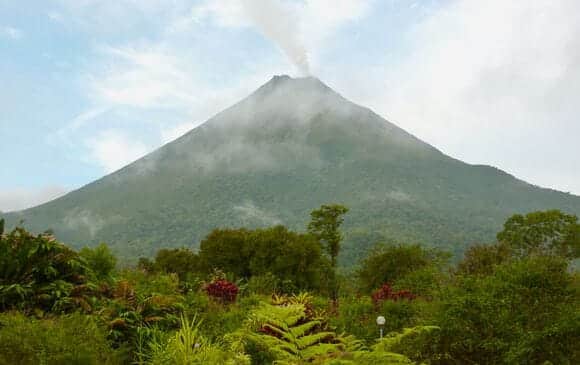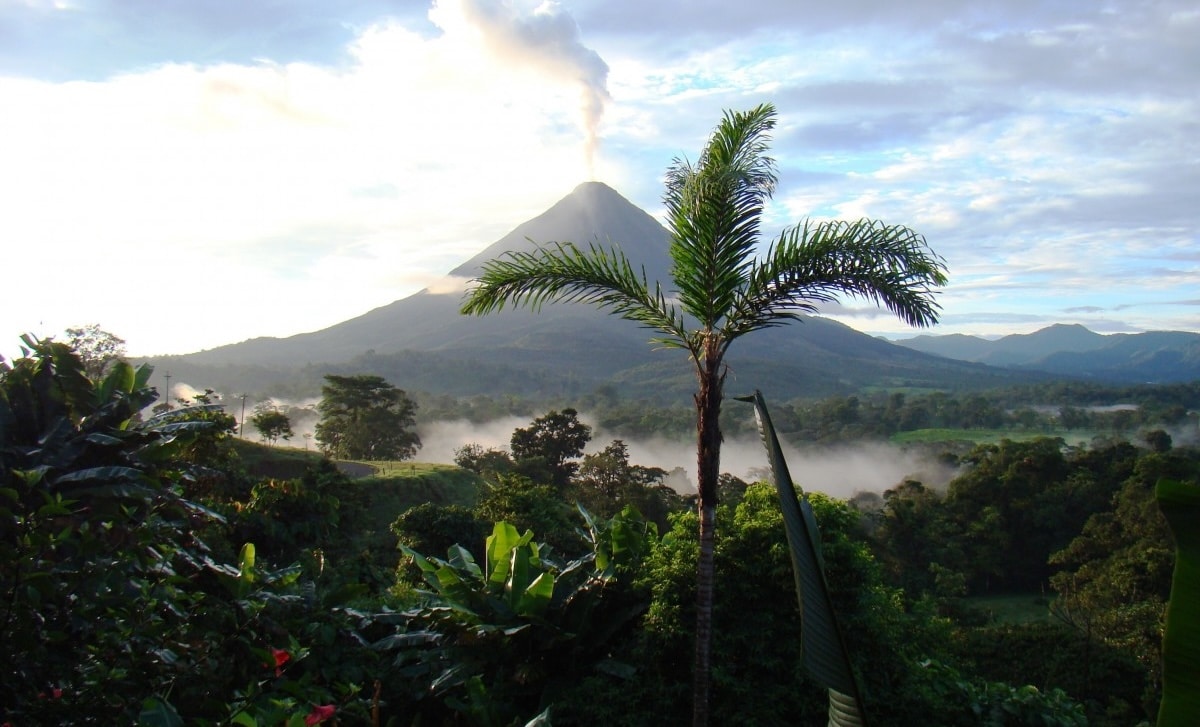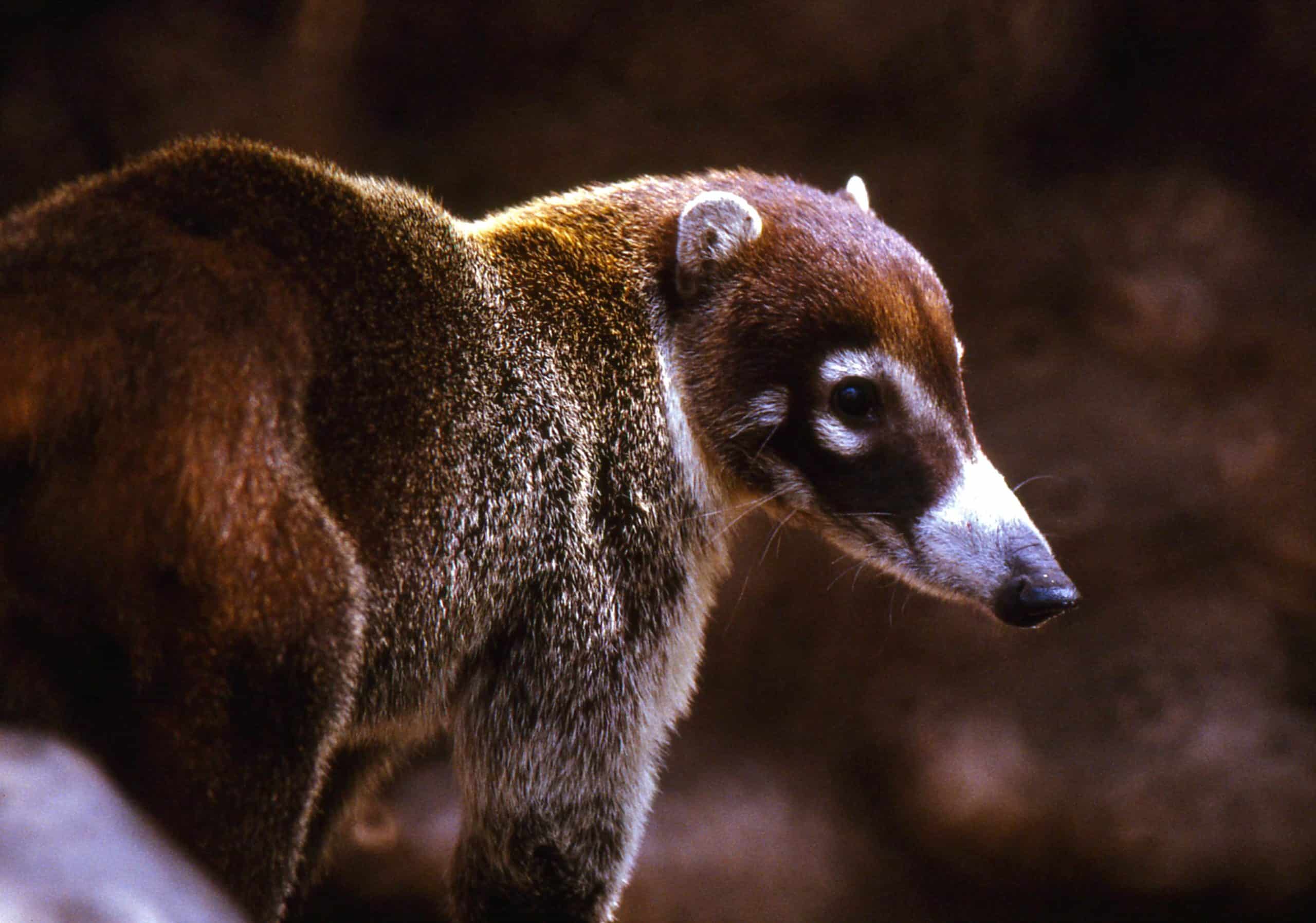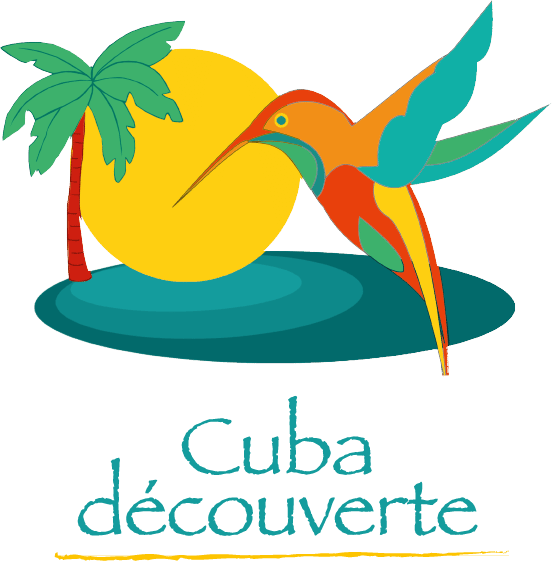Arenal Volcano National Park
Arenal Volcano National Park is one of Costa Rica’s most popular destinations. Famous for its volcano, which was active until 2010, the park offers spectacular scenery and exceptional biodiversity. At the foot of the volcano, the small town of La Fortuna is a natural tourist attraction, with a view of the colossus that cannot be ignored. Individual tours, guided trips to Costa Rica and small groups of tourists almost all pass through this incredibly rich and varied region.
A little bit of history
The national park was created in 1991 to protect the region’s unique ecosystem and offer visitors the opportunity to discover Costa Rica’s natural beauty. The Arenal volcano, once one of the world’s most active volcanoes, made its mark with frequent eruptions and lava flows. Although it is currently dormant, its imprint on the landscape is indelible.
The geography of Arenal
Arenal Volcano National Park covers an area of 12,080 hectares and is part of the Arenal – Tilarán conservation zone. The park is dominated by the Arenal volcano, a stratovolcano rising to an altitude of 1,670 meters. The volcano is relatively young in geological terms, with its initial eruption dating back some 7,000 years.
The park is located in a region characterized by a diversity of landscapes, from tropical rainforests to verdant plains. The climate is tropical, like eternal spring. Showers follow blue skies. The best time to visit this rain-free region is from May to November. Abundant rainfall the rest of the year supports a rich biodiversity, making this region a vibrant and dynamic ecosystem.
A colossus dominates: the Arenal volcano
The special feature of Arenal Volcano National Park is the impressive and majestic volcano of the same name: an almost perfect cone 1,633 m high, whose regular eruptions offer one of Costa Rica’s most extraordinary and impressive natural landscapes.
Arenal is a young stratovolcano, first erupting 7,000 years ago, making it the youngest volcano in Costa Rica.
In addition to lava flows, the volcano regularly produces fiery clouds. Before July 1968, Arenal was considered an extinct volcano. On July 29, 68, 3 craters (A, B and C) opened in an explosion, triggering a high-intensity pyroclastic flow that devastated the area over a 12 km radius and killed 87 people. Since then, the Arenal volcano has experienced periods of intense activity followed by periods of reduced activity, making it a must-see on any trip to Costa Rica.
Main Attractions
In and around Arenal Volcano National Park
- The National Park: balthough less active than in the past, the volcano still offers an impressive spectacle, often releasing fumaroles of gas. Taking an entrance and discovering the ancient lava flows is a great experience. Several viewpoints offer panoramic views of the region, in particular of the lake and surrounding forest.
- The lake: Lake Arenal is the country’s largest lake. This man-made lake, surrounded by verdant mountains and dominated by the majestic Arenal volcano, is a place of exceptional natural beauty. It also plays a crucial role in the country’s economy, both in terms of energy and tourism. Water sports such as kayaking, kitesurfing and fishing are very popular on this lake.
- The tropical forest: the Arenal region is home to a lush tropical forest, rich in biodiversity. Numerous hiking trails allow you to discover this forest and observe a variety of wildlife, including monkeys, sloths and colorful birds. In addition to Arenal National Park, many of the surrounding reserves also offer wonderful excursions and great opportunities to observe incredible wildlife.
- Suspension bridges: if you want to experience the majesty of the rainforest, then Arenal is the place for you. The trees are grandiose and the visit is sure to win you over. We recommend one of our best French-speaking guides, so you don’t miss a thing.
- Hot springs: Costa Rica’s volcanic activity is a source of geothermal heat that feeds the region’s many hot springs. Arenal’s natural hot springs are a particular attraction for visitors to the Arenal. Naturally heated by the volcano’s activity, they offer relaxing evening moments. Many hotels also have thermal pools.
- Tyrolean traverse: this activity mainly attracts travellers who want to combine thrills and nature. Between each cable, you follow a path through the tropical jungle. Then slide over the canopy for distances of up to 1.2 km! One of Costa Rica’s most impressive waterfalls is at Arenal.
- The Arenal waterfall: the Arenal waterfall is one of Costa Rica’s most emblematic natural wonders. Nestled in a lush tropical forest, this impressive waterfall attracts visitors from all over the world for its natural beauty and peaceful setting. This impressive waterfall, some 70 metres high, is fed by the Arenal River and offers a breathtaking natural spectacle.
The flora of Arenal Volcano National Park
Arenal Park boasts a wide variety of flora and fauna: transitional rainforest, montane rainforest, transitional lower montane rainforest and transitional premontane, covering approximately 47% of the area. Ceibas, or cheese trees, are among the region’s most emblematic trees, impressing visitors to the national park with the gigantic size of their roots. Some are over 400 years old and can reach heights of over 50 m, and are home to a wide variety of fauna.
The park is also home to guava, ficus, guarumo or cecropia obtusifolia, balsa, various palm species, tree ferns and bromeliads, including endemic species such as pitcaimia funkiae. These species are particularly fond of the volcano’s rich slopes.
Costa Rica is one of the richest countries in the world in terms of orchid species. The Arenal region is no exception, and is home to many varieties of these delicate, colorful flowers.
The vegetation of the Arenal region has adapted to the particular conditions of this volcanic environment. Plants have developed mechanisms to resist eruptions, lava flows and nutrient-poor soils. Some species even have aerial roots that enable them to absorb moisture from the air.
Wildlife in Arenal Volcano National Park
The fauna that inhabits these forests is essentially tapir, coati, sloth, deer, and numerous reptiles such as terciopelo (or fer-de-lance), lora (or chironius carinatus) and boa.
Birdwatchers are particularly fond of this region, where there is a huge variety of birds (53% of the country’s species), including parrots, the Finsh’s Conure or Aztec Conure, the Touit Costaricensis, hummingbirds, quetzals and the great Tinamou, Bonaparte’s Tinamou, Blue-winged Teal, Grey-headed Ortalid, Variegated Penelope, Unicolored Penelope, Superb Frigate, Mexican Walleye, American Tantalus, Cayenne Kite, Sparrowhawks, Laughing Macagua, Caranea Aramid, etc.
Important Information:
- The park is open daily from 8 a.m. to 4 p.m.
- Admission: $17/person
- Hiking boots and clothing suited to the tropical climate are recommended. Rain gear is recommended.
- Don’t forget to bring plenty of water.
What’s the best national park in Costa Rica?
Comparing Cabo Blanco Park in Costa Rica with Arenal Park or any other park in Costa Rica is simply impossible. Each region and each park has its own unique characteristics. There are no fewer than 26 national parks in Costa Rica, and there are sure to be several to suit your taste.







No comment regarding « Arenal Volcano National Park »